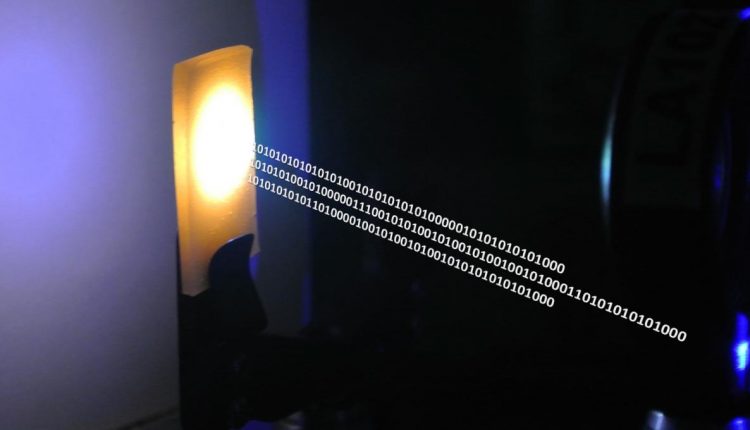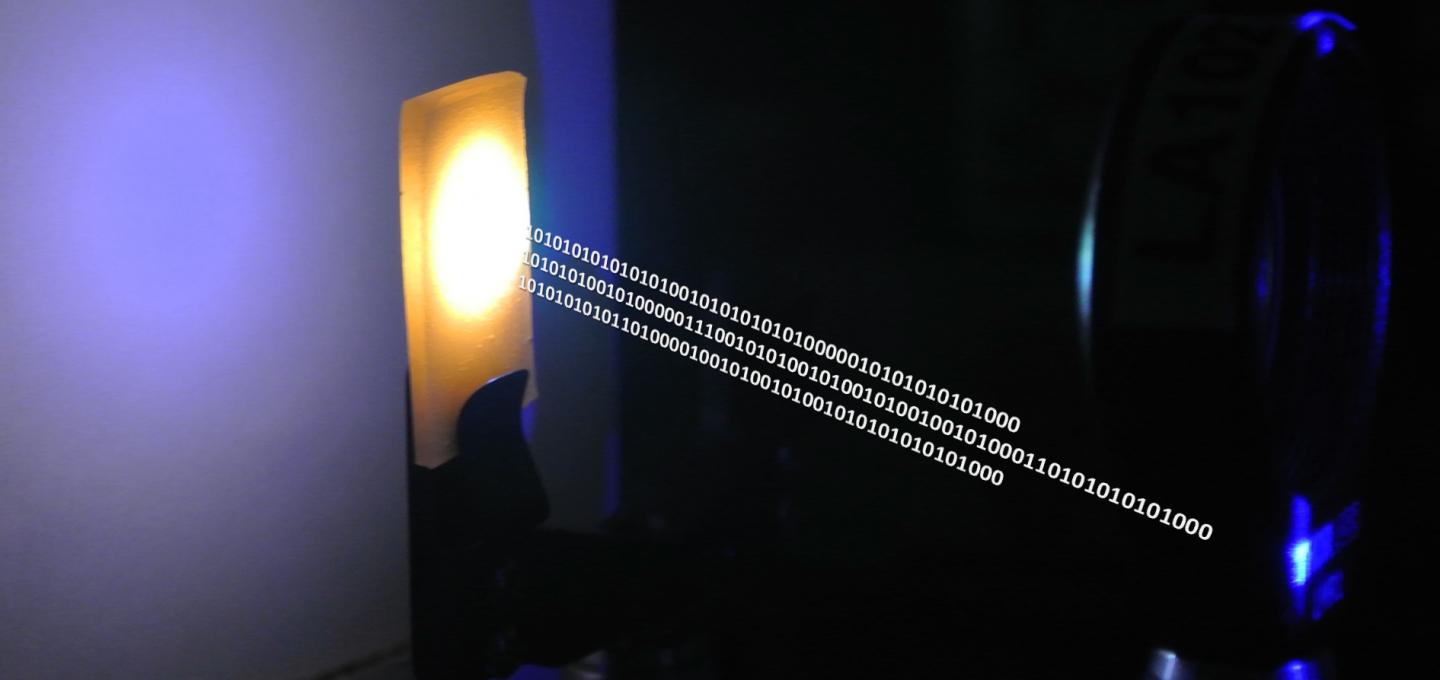
Researchers convert lasers into Wi-Fi
A team of researchers from King Abdullah University of Science and Technology (KAUST) has just figured out a way to turn blue light into white light quickly.
Wi-Fi and Bluetooth are well established technologies, but there are advantages to being able to shorten the wavelength of the electromagnetic waves used for transmitting information.

One way to do this is with visible-light communication (VLC), which uses parts of the electromagnetic spectrum that are unregulated and could even be more energy-efficient. VCL offers a way to combine information transmission with lighting and display technologies — so, for example, using ceiling lights to provide internet connections to laptops.
These kinds of VLC applications require light-emitting diodes (LEDs) that produce white light, which are usually created by combining a diode that emits blue light with phosphorous that turns some of this radiation into red and green light. However, this conversion process is not fast enough to match the speed at which the LED can be switched on and off.
“VLC using white light generated in this way is limited to about one hundred million bits per second,” said Boon Ooi, KAUST Professor of Electrical Engineering.
Ooi, colleague Osman Bakr, and their team decided to use a nanocrystal-based converter that enables much higher data rates.
The team created nanocrystals of cesium lead bromide roughly eight nanometers in size using a method that incorporated a conventional nitride phosphor. When illuminated by a blue laser light, the nanocrystals emitted green light while the nitride emitted red light. Together, the two created a warm white light.
Using a technique called femtosecond transient spectroscopy the team was able to show that the optical processes in cesium lead bromide nanocrystals occur on a time-scale of about seven nanoseconds, which meant that the researchers could modulate the optical emission at a frequency of 491 Megahertz —40 times faster than is possible using phosphorus — and transmit data at a rate of two billion bits per second.
“The rapid response is partly due to the size of the crystals,” said Bakr. “Spatial confinement makes it more likely that the electron will recombine with a hole and emit a photon.”
In addition, the white light generated using their perovskite nanostructures was of a quality comparable to present LED technology.
“We believe that white light generated using semiconductor lasers will one day replace the LED white-light bulbs for energy-efficient lighting,” said Ooi.

Comments are closed, but trackbacks and pingbacks are open.